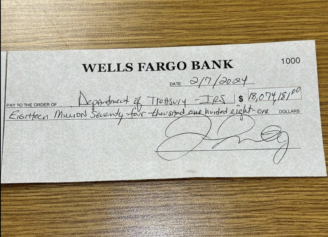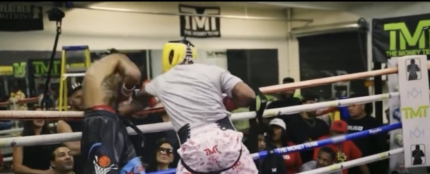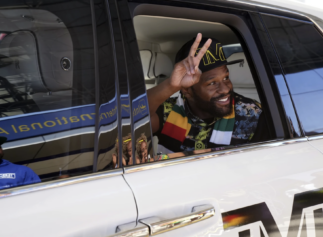Last month, a middleweight showdown of the ages took place in the Mecca of boxing, New York’s Madison Square Garden. Undisputed middleweight champion Gennady GGG Golovkin was truly facing his biggest challenge to date in Brooklyns own Miracle Man, Daniel Jacobs.
The fight had all the makings of a classic boxing saga that would not only sell out the hallowed arena, but also spark millions of people to press the purchase button on their remotes. For the last few years, pay per view has been the gold standard of combat sports success, and popular culture dictates that a fight isnt successful if the buys are low.
So the boxing world let out a collective gasp when the PPV buys for GGG vs. Jacobs were revealed to be just north of 150,000. It was a repeat of Golovkins PPV debut at the Garden in 2015 against David Lemieux, which did similar numbers.
Both events boasted sold out gates but fell short in the battle for broadcast viewership.
From the days of Mike Tyson to Oscar De La Hoya and Floyd Mayweather, Jr., boxing PPVs generated astronomical numbers. It skewed the free TV model that broke fighters, pushing all the best fights to premium cable’s subscriber base and beyond.
Mayweather vs. Manny Pacquiao left the PPV barometer at its all time high with 4.5 million buys. And that was when the game leveled out.
People who either hoped that Mayweather would lose the match or were disappointed with his defense-heavy style felt robbed by the $99.99 PPV price point. In addition, closed circuit viewing was up to $150 a seat and quickly sold out, adding to the build up and eventual disappointment.
When Premier Boxing Champions shifted the premium cable model by taking boxings highest rated champions to network TV, it signaled the pending irrelevance of the PPV model. Greed and false hype aside, with the proliferation of digital distribution outlets and free TV, people do not feel the fights are worth their money anymore.
Arguably, the GGG vs. Jacobs fight and GGG vs. Lemieux fights were better stylistically than Mayweather vs. Pacquiao. Jacobs performed admirably in a valiant comeback, despite his loss, and the hard-hitting Lemieux being finished in spectacular fashion.
Still, they didnt make the PPV grade.
Golovkin isn’t completely fluid in English, which plays a factor in his ability to connect with the American audience. But Pacquiao was able to overcome that hurdle in relation to connection with American fans and his PPV sales. As networks like HBO more frequently now opt not to pay the broadcast distribution rights to fights, forcing the promoter to take it to PPV, we will continue to see fans not willing to pick up the difference.
Boxings new resurgence will have to be sustained with newer models like Premier Boxing Champions time-buy for 100% of advertising revenue model. Even other combat sports like mixed martial arts have only seen a spike in sales when its uber marquee stars like Conor McGregor, Ronda Rousey and Brock Lesnar fight.
To combat this, the UFC has turned to FOX Sports for its broadcast distribution revenue and its own digital subscription service, UFC Fight Pass.
Boxing is shifting, and with it so will its dinosaur models of receiving its newest generation of stars. If not, a sensationalist bout like the absurd Conor McGregor vs. Mayweather, or ridiculously hyped-but-we-knew-wouldn’t-happen Souljah Boy vs. Chris Brown bout, will continue to linger in the universe to sell circus-level matchups for an old business model.



